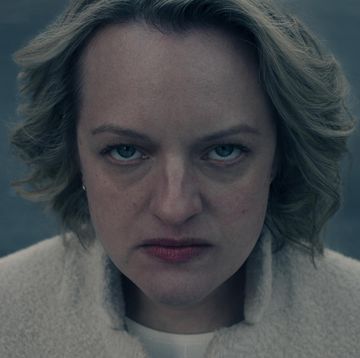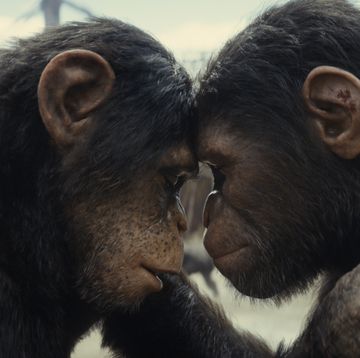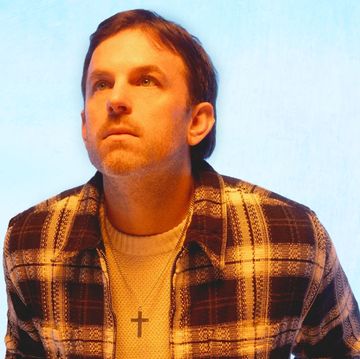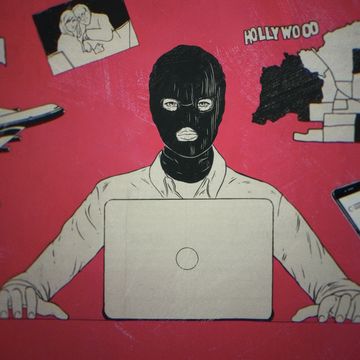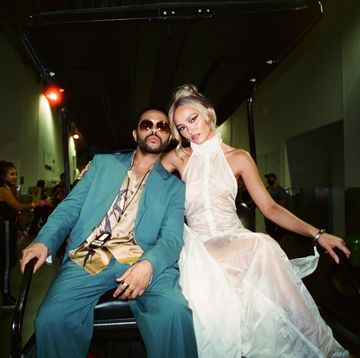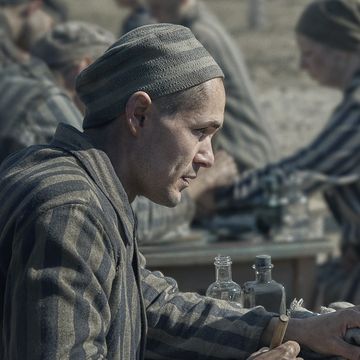Update, 21 June: Netflix has now created an actual Streamberry platform, which you can read about further down this article.
As Joan (played by Schitt’s Creek star Annie Murphy) settles down to watch TV with her partner in the opening episode of Black Mirror series six, an extremely relatable question rears its head: what, when faced with the seemingly infinite scroll of movies and shows that now make up streaming platforms, should you watch tonight?
Despite its very Netflix-ian “tudum” jingle and typeface, the platform in question is actually called Streamberry. But the comparison is obvious. Alongside its usual modus operandi of “What if technology, but bad”, the dystopian anthology series has always enjoyed taking a pop at the media industry as a whole – and that includes the juggernaut host of Black Mirror itself, Netflix.
A running theme in the new series is that you should really start to check the terms and conditions offered by media companies, but series six is also concerned by the prominent role that adaptive algorithms play in our day to day, and where our clicks really lead us as a society. From dodgy paparazzi videos of celebrities in states of disarray (“Mazey Day”) to pop culture's unending obsession with true crime documentaries (“Loch Henry”), the show asks: how responsible are we for the grubby little stories that these platforms produce in bulk?
In “Joan Is Awful”, her fiancé complains: “I can’t really do another true crime, I’m sorry, after Gacy…”, referring to Netflix’s 2022 documentary, Conversations with a Killer: The John Wayne Gacy Tapes, which examined one of America’s most prolific serials killers. Meanwhile, in “Loch Henry”, when budding filmmakers Davis (Samuel Plenkin) and Pia (Myha’la Herrold) pitch their idea to cover a spate of murders, the production company tells them that the killer is “not as well known as a Ted Bundy or Fred West… the first thing any platform is going to ask is: what’s the hook?”.
These episodes echo the widespread criticism placed at true crime stories on TV over the past few years; the suggestion that they glamorise killers and encourage armchair detectives. One Netflix series, Dahmer – Monster: The Jeffrey Dahmer Story, was particularly at fault, as writer-director Ryan Murphy made the show without the involvement of the victims' families, leading The Guardian to question if it was “the most exploitative TV of 2022”. Meanwhile, the New Statesman said the show only served to prove that the genre was “morally indefensible”.
All this furore soon fell by the wayside, as Dahmer would became Netflix's second most-watched English-language series of all-time within 28 days. It went on to win a Golden Globe and, just like the fictional “Loch Henry” doc, a Bafta. Netflix then announced it had renewed Monster as an anthology series, with two further editions based on the lives of “other monstrous figures" to be announced, with the second to focus on the case of the Menéndez brothers.
But in Black Mirror series 6, specifically “Loch Henry”, Brooker also fails to take this conversation any further. Yes, we know this is going on. Yes, it’s gross. What's your point? It’s simply reinforcing the status quo of the industry, rather than using the terrific future-predicting storytelling employed by the show in the past to imagine where this might go next.
Perhaps the fact that Netflix was happy to green light the episode is a damning indictment of its failure to land any substantial punches. In an interview with Empire magazine, Brooker revealed that there was no pushback from Netflix on the content: “They went away and came back quite quickly — weirdly quickly — and said, 'Yeah, okay.' There wasn’t any resistance to it, that I could tell. Which is a bit disappointing, because it would be good to be able to say 'I just did it anyway, because I’m an anarchist!' But no.”
He added: “That episode [“Joan Is Awful”] is quite meta and weird anyway. It’s one thing watching it in the edit, but the thought that people are going to be watching it on the Netflix platform itself? That’s really quite bonkers.” If only that were so.
Netflix have now launched an actual Streamberry site, where you can create a vision of what your very own Joan Is Awful show might look like.
Of all the prophecies to be made into a reality from the six series of Black Mirror, this is thankfully the least terrifying, so here’s how it works:
What’s on Streamberry?
Click on this link here (streamberry.tv) and it’ll take you to what looks like the Streamberry homepage.
Firstly: check out all the new call-backs to previous Black Mirror episodes. Laid out in the same set up as Netflix, there’s ‘top picks for you’ of:
- Hot Shot (from the Fifteen Million Merits episode)
- Mad Mind: The Jerome F. Davies story (from the interactive Bandersnatch episode)
- Average People (Death to 2020)
- Rowdy and Peanut (Cat Burglar, an interactive animation from Charlie Brooker and Annabel Jones)
- Finding Ritman (Bandersnatch, again)
- The Callow Years (The National Anthem)
Then, the platform offers ‘New to Streamberry’:
- USS Callister (USS Callister)
- Smithereens: Driver Confessions (Smithereens)
- Roxette X Lance: Striking Vipers (Striking Vipers)
- Selling San Junipero (San Junipero)
- Ashley: On A Roll Tour Live (Rachel, Jack and Ashley, Too)
- Five Stars At A Wedding (Nosedive)
How do you get your own show?
Well, Streamberry isn’t exactly advanced enough to generate an entire show dedicated to your daily life. But what it can do is create an advertising image for what it might look like.
Click on the ‘Make me awful’ button and it will take you through to another Streamberry (“Sweet streams!”) site. Follow through the instructions asking you to join the Streamberry family, give your name and upload a photo, and it will create an image from your profile photo imagining what your show might look like.
But as Joan Is Awful reminds us, you should check the terms and conditions: some of these generated images will be displayed on actual real-life billboards at the end of the promotion.
Meta? We’re now more layers deep than Tenet.



